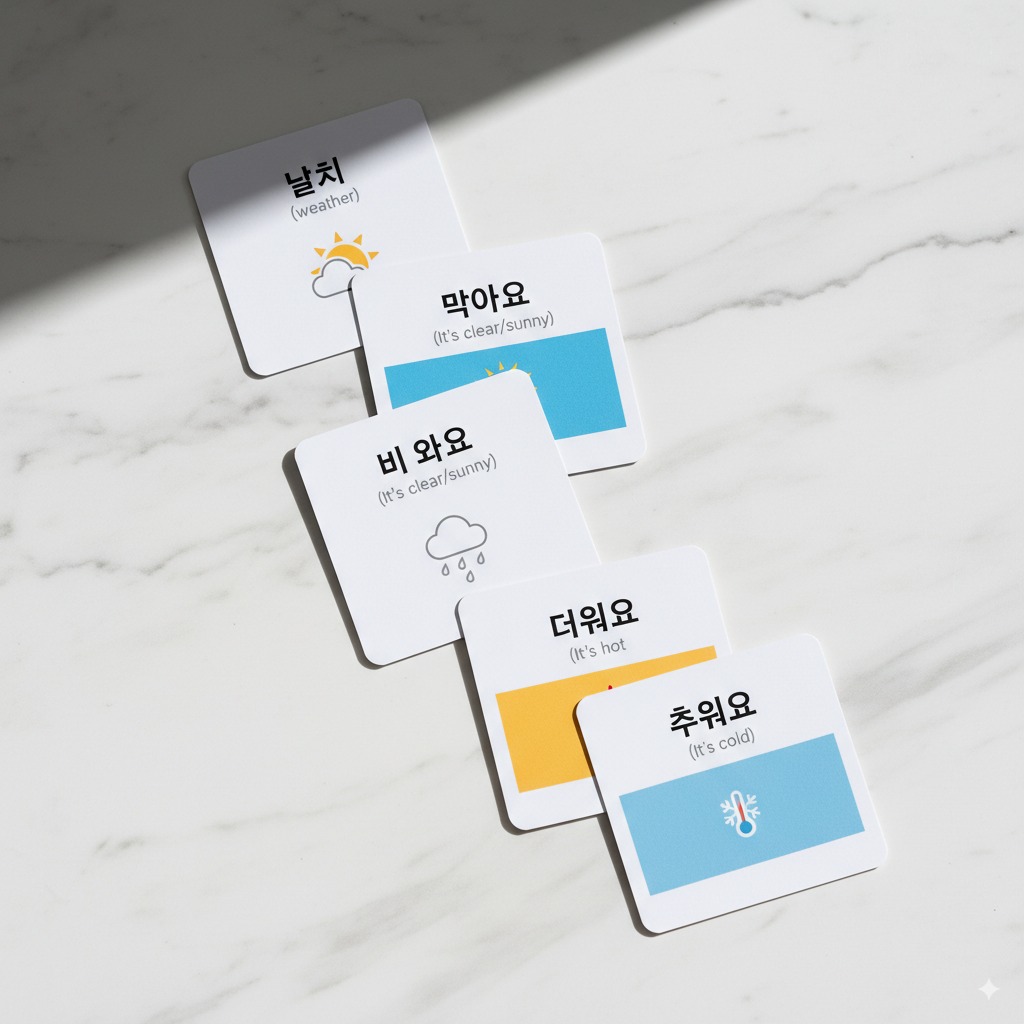Korean Weather and Seasons Vocabulary
Try a sample flashcard
눈
Click to flip
snow
눈
This is what every flashcard in this set looks like
What you'll learn
- Master essential Korean weather terms.
- Discuss daily climate conditions confidently.
- Describe seasonal changes in Korean.
- Enhance conversational Korean skills.
Student testimonials
"These flashcards made learning Korean weather vocabulary so much easier! I can now talk about the '비' (rain) or '눈' (snow) with my Korean friends without hesitation. The spaced repetition really helped solidify the terms."
— Sarah L., Language Learner
"As a beginner, understanding seasonal vocabulary in Korean was a challenge. This set perfectly covered '봄' (spring) and '여름' (summer) terms. It's incredibly practical for everyday conversations and improved my fluency significantly."
— David K., Student

Get instant access to all 20 flashcards
Secure payment • Instant access
What's included:
- Full access to all 20 flashcards
- Smart study system with spaced repetition
- Detailed learning progress statistics
- Mobile and desktop friendly interface
- Lifetime access to updates
Frequently Asked Questions
Why is learning Korean weather vocabulary important?
Mastering Korean weather and season terms is crucial for natural daily conversations. It allows you to discuss climate, temperature, and seasonal activities, making your Korean interactions more fluid and authentic. These essential Korean climate terms are key for everyday communication.
Is this Korean vocabulary set suitable for beginners?
Absolutely! This set is designed for all levels, from beginners starting their Korean language journey to intermediate learners looking to expand their conversational vocabulary. It covers fundamental terms like '맑음' (clear) and '흐림' (cloudy) for effective Korean language learning.
How can these flashcards help me remember Korean weather terms?
Our flashcards utilize spaced repetition, a proven method for long-term memory retention. By regularly reviewing terms like '더워요' (hot) and '추워요' (cold), you'll effectively internalize Korean weather expressions for various seasons, improving your recall of Korean temperature words.
What practical situations can I use this Korean vocabulary in?
You can use this vocabulary in countless daily situations: discussing the '가을' (autumn) leaves, asking about the '겨울' (winter) forecast, planning activities based on the '날씨' (weather), or simply making small talk about the current temperature in Korean daily conversation.